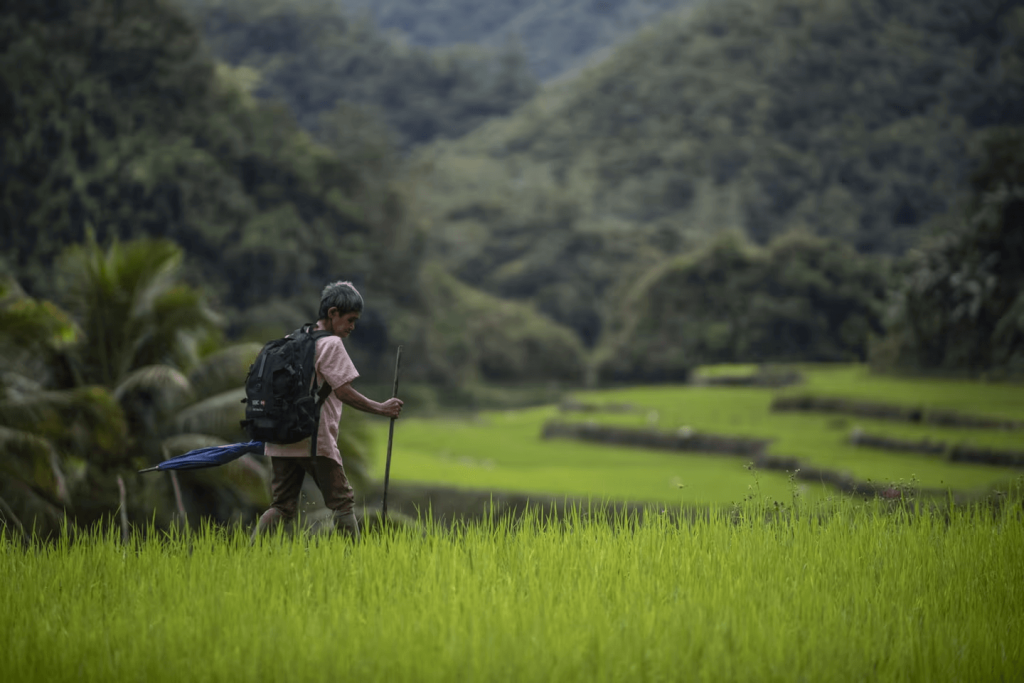Tags
Golden rice could save hundreds of thousands of lives every year
Evidence on the genetically modified crop is overwhelming: it poses no dangers while offering fantastic life-saving potential.

William Reville
Vitamin A deficiency (VAD), practically unknown in the western world, has been a deadly public health problem in parts of the world for more than 30 years.
VAD, causing blindness and death, is common in countries where white rice is the staple food but diversity of diet is limited. It is estimated to cause up to half a million deaths in childhood worldwide annually.
Golden rice (GR), a genetically modified (GM) crop, is a public-sector product deliberately designed to add vitamin A to diets to deal with the deficiency. Its inventors, Ingo Potrykus of the Swiss Federal Institute of Technology and Peter Beyer of the University of Freiburg, legally secured as a humanitarian project rather than commercialising their invention.
Science declares GR is safe to eat and it has been registered as a safe food in several industrialised countries. The case for its introduction to parts of the world where VAD is widespread seems overwhelmingly obvious but so far has been obstructed by anti-GMO/GR activists.
Last April the Philippine government, following objections from Greenpeace, reversed that country’s approval of GR. This decision could cause the deaths of thousands of children. Other countries such as India and Bangladesh where the deficiency is widespread were also considering planting golden rice but will probably be deterred now.
When rice is stored, the husk and outer layer are removed to prevent rancidity. What remains – white rice – contains no minerals or vitamins, essential for good health, but has some fat and is a good source of carbohydrates for energy. Vitamins and minerals are scarce in diets of many countries where white rice is the staple, often because poverty restricts use of relatively expensive dietary supplements. Alarmingly, almost two billion people worldwide, 25 per cent of the world’s population, are micronutrient-deficient with associated mortality and morbidity.
VAD is a two-fold tragedy. Firstly, blindness from VAD is a harbinger of death – two-thirds of sufferers will die within a year of contracting blindness, and secondly because VAD is preventable through modern agricultural technology. Various attempts have been made to ameliorate the VAD scourge including distribution of vitamin A supplements and attempting to educate extremely poor villagers on dietary changes. All such efforts failed.
Apparently only one solution could work on a global scale – vitamin A-enhanced GR. Golden rice is so named because of its bright yellow colour, caused by its high content of vitamin A precursor beta-carotene. The human body transforms beta-carotene, also known as pro-vitamin A, into vitamin A. But, so far, introduction of GR has been blocked by advocacy groups led by Greenpeace International who fiercely oppose the introduction of genetic engineering into agriculture. This campaign has seen off regulators and intimidated the general public, in my view. Unfortunately, the collateral damage caused by this opposition are the lives of vulnerable children.
Following the “proof-of-concept” paper in 2000 announcing the successful development of GR, Greenpeace announced an adult must eat at least 9kg of cooked GR daily to satisfy their dietary need for vitamin A. However, more recent research has convincingly demonstrated that if it was the sole source of dietary beta-carotene, 50 per cent of the estimated annual requirement of beta-carotene, which GR can deliver, is sufficient to successfully combat VAD. Greenpeace has backed away from its initial claims about the insufficiency of golden rice diets.
Opponents of GR have developed an influential, although inaccurate narrative against GM crops in general. But mainline science states that genetically modified organisms are not more risky per se than conventional plant breeding technologies and the European Commission has issued a statement to this effect.
And, of the approximately 290 Nobel laureates living, 141 signed an open letter to Greenpeace, the UN and governments around the world calling for a halt to the campaign against crops improved by biotechnology, and specifically GR, saying “opposition based on emotion and dogma, contradicted by data, must be stopped“. The letter is also supported by more than 13,000 scientists and citizens.
There is no doubt that caution is warranted when considering release of GM organisms into the environment. But in the case of GR the evidence is overwhelming that release poses no dangers while offering fantastic life-saving potential. It is now time for the opposition to stand down.
https://www.irishtimes.com/science/2024/11/07/golden-rice-could-save-hundreds-of-thousands-of-lives-every-year/Published Date: November 8, 2024






